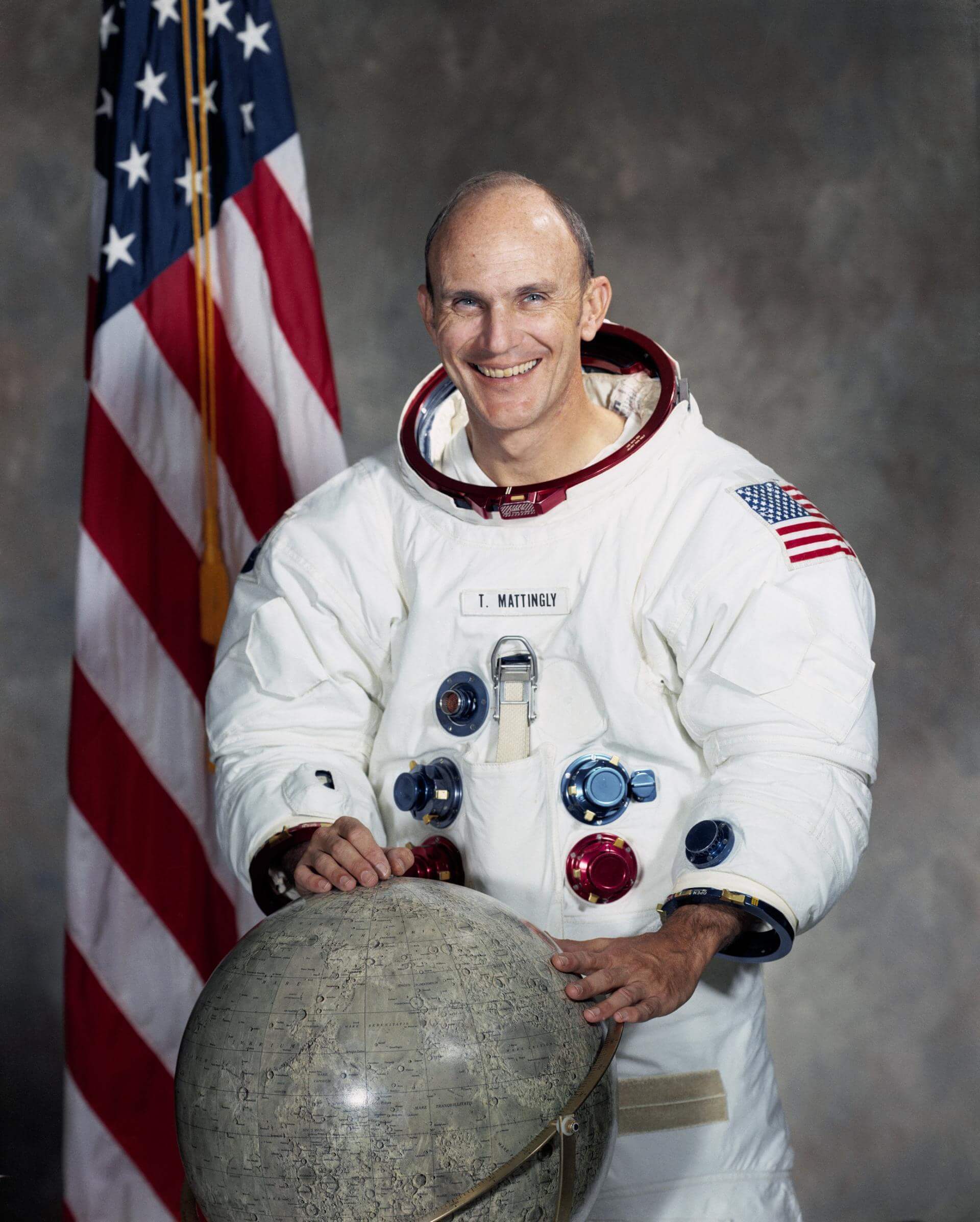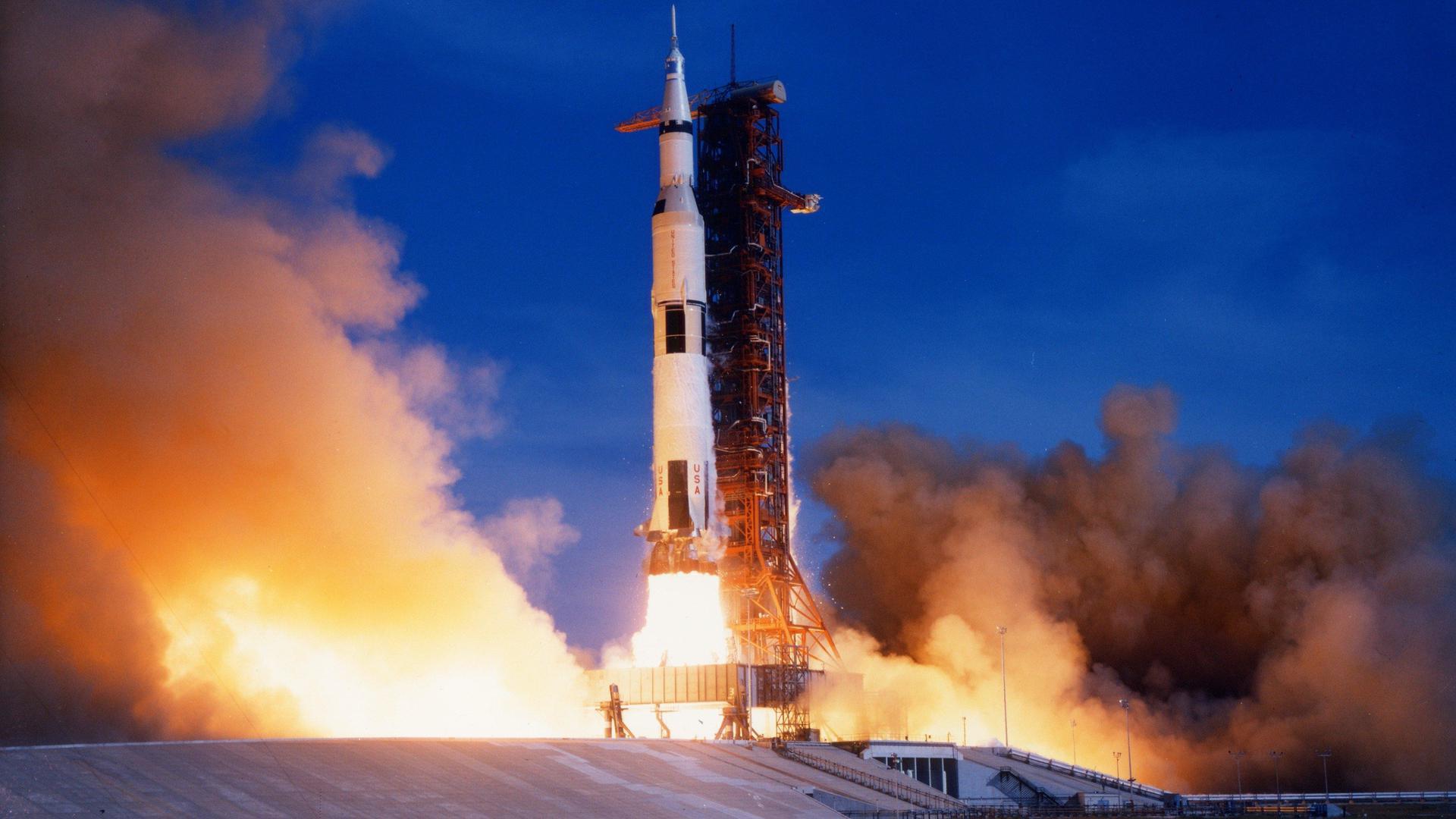Ken Mattingly
American - (NASA)
Deceased
Date of Birth: March 17, 1936
Date of Death: Oct. 31, 2023
Thomas Kenneth Mattingly II better known as Ken Mattingly, is a former American naval officer and aviator, aeronautical engineer, test pilot, Rear Admiral in the United States Navy and astronaut who flew on the Apollo 16, STS-4 and STS-51-C missions. He had been scheduled to fly on Apollo 13, but was held back due to concerns about a potential illness (which he did not contract). He later flew as Command Module Pilot for Apollo 16, making him one of only 24 people to have flown to the Moon.
Saturn V | Apollo 16
National Aeronautics and Space Administration | United States of AmericaKennedy Space Center, FL, USA
April 16, 1972, 5:54 p.m.
Status: Success
Mission:
Apollo 16 was the 10th crewed launch of the Apollo program. The craft was crewed by Commander John Young, Command Module Pilot Ken Mattingly & Lunar Module Pilot Charles Duke. The mission duration was 11 days, 1 hour, 51 minutes & 5 seconds during which time Young and Duke spent 71 hours on the surface of the Moon spending a total of 20 hours and 14 minutes on moonwalks while Mattingly spend 126 hours or 64 orbits in lunar orbit. While conducting moonwalks, Young and Duke collected 95.8Kg of lunar samples. During return trip to Earth Mattingly performed an EVA to collect film cassettes from the exterior of the service module.
Lunar OrbitSpace Shuttle Columbia / OV-102 | STS-4
National Aeronautics and Space Administration | United States of AmericaKennedy Space Center, FL, USA
June 27, 1982, 3 p.m.
Space Shuttle Discovery / OV-103 | STS-51-C
National Aeronautics and Space Administration | United States of AmericaKennedy Space Center, FL, USA
Jan. 24, 1985, 7:50 p.m.
Status: Success
Mission:
STS-51-C was the fifteenth flight of the shuttle program and third for the Space Shuttle Discovery. It was the first space shuttle mission dedicated to the United States Department of Defense and therefore, the mission details remain classified.
Low Earth OrbitThe National Aeronautics and Space Administration is an independent agency of the executive branch of the United States federal government responsible for the civilian space program, as well as aeronautics and aerospace research. NASA have many launch facilities but most are inactive. The most commonly used pad will be LC-39B at Kennedy Space Center in Florida.
Long March 3B/E
Fengyun-4C
Launch Complex 2 (LC-2) - Xichang Satellite Launch Center, People's Republic of ChinaChina's geostationary meteorological satellite program FY-4 (Feng Yun 4) is the second generation of chinese geostationary meteorological satellites.
Long March 8A
SatNet LEO Group 17
Commercial LC-1 - Wenchang Space Launch Site, People's Republic of ChinaA batch of 9 Low Earth Orbit communication satellites for the Chinese state owned SatNet constellation operated by the China Satellite Network Group.…
Soyuz 2.1a
Obzor-R No.1
43/4 (43R) - Plesetsk Cosmodrome, Russian FederationNote: Assignment of payloads to this launch is uncertain. The Russian Obzor-R satellite is a planned X-band radar earth observation satellite desi…
LVM-3 (GSLV Mk III)
BlueBird Block 2 #1
Satish Dhawan Space Centre Second Launch Pad - Satish Dhawan Space Centre, IndiaAST SpaceMobile’s Block 2 BlueBird satellites are designed to deliver up to 10 times the bandwidth capacity of the BlueBird Block 1 satellites, requi…
Long March 12A
Demo Flight
Long March 12A Pad - Jiuquan Satellite Launch Center, People's Republic of ChinaFirst test launch of CASC/SAST’s Long March 12A rocket, with a dummy payload. The rocket’s 1st stage attempted to land on a landing pad about 300 km …




